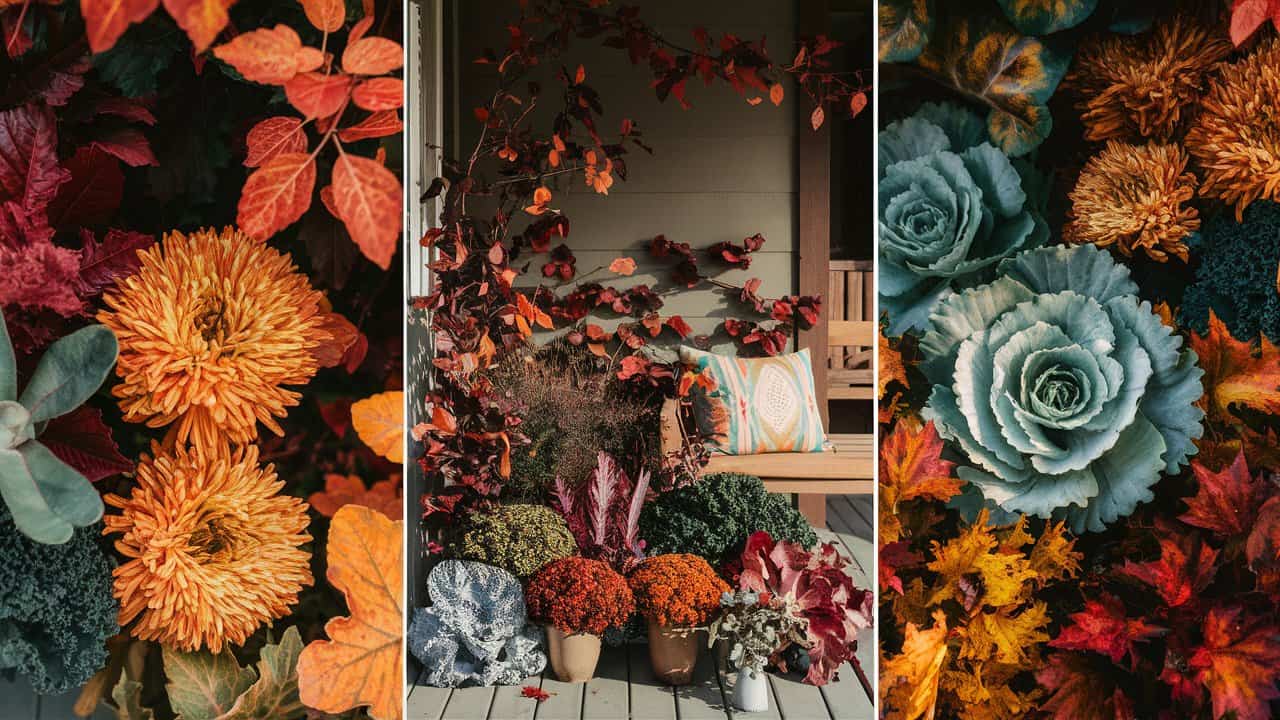As the summer sun yields to the crisper, cooler days of fall, your porch presents a beautiful opportunity to breathe new life into your shaded outdoor space. While you may think that a shady area limits your choices when it comes to plants, there are plenty of stunning varieties that thrive in low-light conditions while adding vibrant splashes of color and texture.
Impatiens
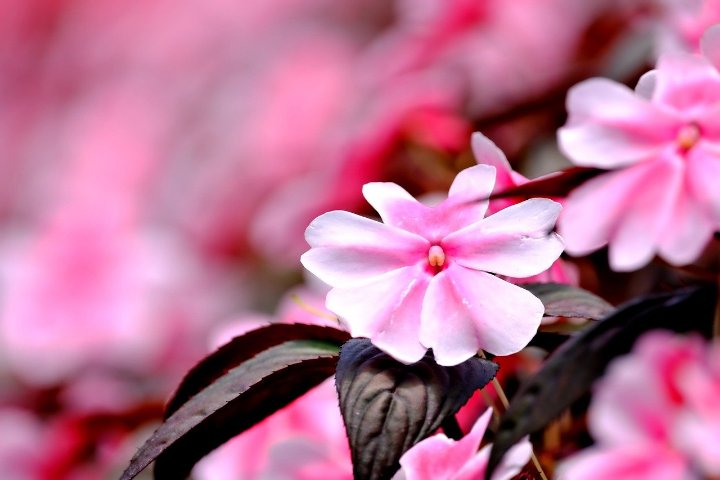
Impatiens are a beloved choice for shaded porches, and their fall renditions are nothing short of spectacular. Known for their brilliant blooms, these flowers are available in a wide array of colors, including shades of red, pink, white, and purple. One of the most appealing aspects of Impatiens is their ability to flower profusely even in low-light environments, making them perfect for areas that receive partial to full shade.
When selecting Impatiens for your porch, consider the New Guinea variety, which is a bit more heat-resistant than its standard counterpart. This resilience allows them to maintain vibrant blooms longer into the fall season, perfect for those looking to extend their porch’s visual appeal. Additionally, Impatiens are relatively low-maintenance; simply ensure they are planted in well-draining soil and water them consistently to keep their roots hydrated. To give your porch a more lively, vibrant feel, you can combine different colors of Impatiens in hanging baskets or window boxes, creating a stunning visual tapestry that welcomes you into the cooler autumn months.
Boston Fern
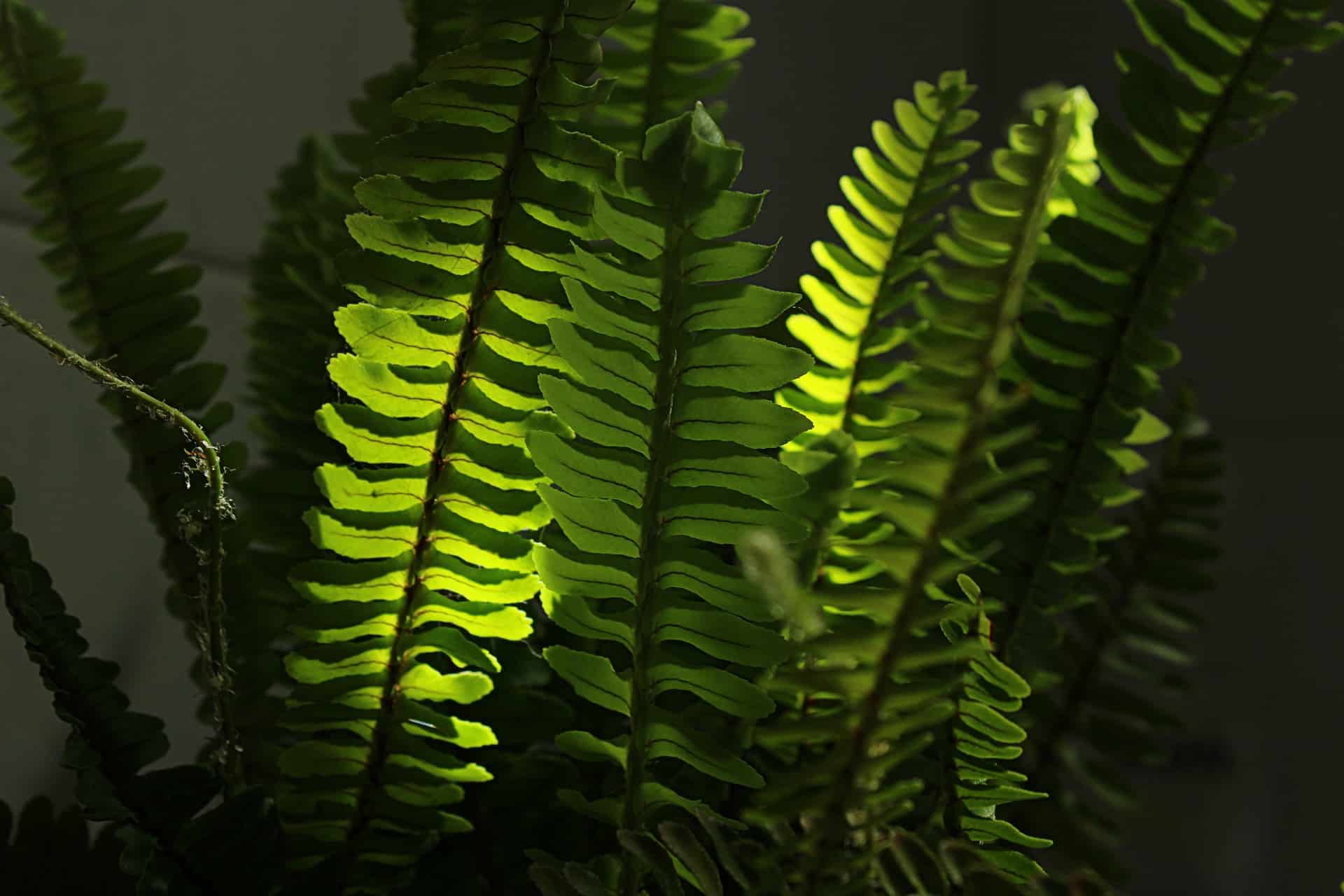
If you’re looking to add texture and lush greenery to your shaded porch, the Boston Fern (Nephrolepis exaltata) is the perfect option. Renowned for its delicate, arching fronds, this plant brings an air of elegance and coolness to any space it inhabits. Its ability to thrive in indirect sunlight makes it ideally suited for porches where direct sun rarely penetrates.
Boston Ferns prefer a humid environment, so if your porch is particularly dry during the fall, consider misting the fronds regularly to maintain their vibrant green color and vitality. They can be displayed in hanging baskets or as a potted plant on tables or shelves, cascading elegantly down and offering a delightful visual contrast against the often muted tones of fall. Moreover, they can serve as natural air purifiers, improving the quality of your outdoor space while supporting a healthy garden ecosystem. As you enjoy your cozy fall evenings, the Boston Fern will not only enhance the beauty of your porch but also create a refreshing atmosphere in which to relax.
Coral Bells
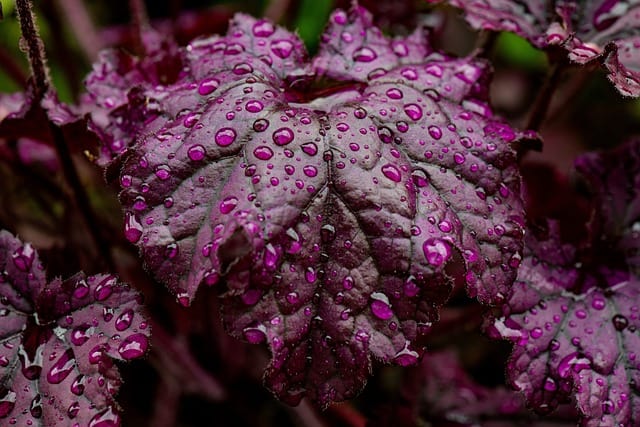
Another fantastic option for enhancing a shaded porch in the fall is the Coral Bells (Heuchera). Known for their vibrant foliage, Coral Bells come in a variety of colors that range from deep burgundy to bright chartreuse, allowing for countless design possibilities. The foliage of Coral Bells can often maintain its color well into the fall, providing rich visual interest in the dimmer light that autumn brings.
These perennial plants thrive in partial shade and actually benefit from cooler temperatures, making them an excellent choice for your shaded fall porch. The small, bell-shaped flowers that bloom in the summer can persist into the fall, attracting bees and butterflies, which adds a dynamic level of life and energy to your outdoor space.
Coral Bells are also relatively easy to care for. They tolerate a variety of soil conditions and only require occasional watering, making them a low-maintenance choice that doesn’t compromise on style. When planning your shaded porch, consider pairing Coral Bells with other shade-tolerant plants to create a tiered look that highlights their contrasting foliage colors and textures. Their graceful presence will effortlessly brighten up your shaded retreat, offering the perfect setting for autumn gatherings or tranquil mornings with a warm cup of coffee.
Coleus
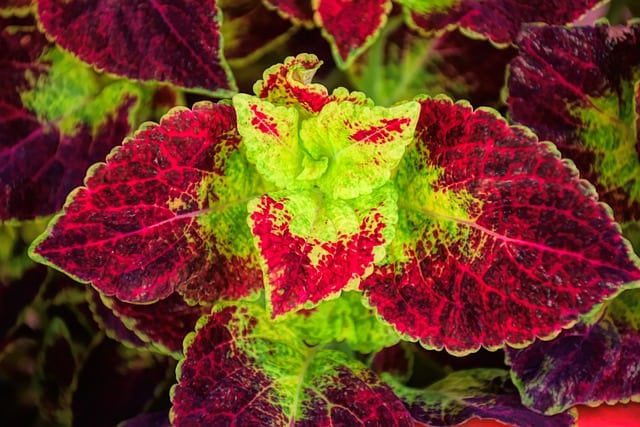
Coleus plants are celebrated for their stunning, variegated foliage rather than their flowers. This versatile shade-loving plant comes in an impressive range of colors and patterns, which can be tailored to match the ultimate aesthetic of your porch. From deep purples and vibrant pinks to breathtaking lime greens and even multicolored varieties, the Coleus adds vivid splashes of color to your outdoor sanctuary, bringing the spirit of fall alive in your space.
These plants thrive in partial shade, making them a fantastic choice for porches that don’t receive direct sunlight for extended periods. Ideally, Coleus should be planted in nutrient-rich, well-draining soil to support their rapid growth. They require regular watering to keep their soil moist but not waterlogged. One exciting aspect of Coleus is that they can be easily propagated through cuttings, allowing you to create new plants to fill other containers or share with friends. Furthermore, to ensure continuous foliage health and attractiveness throughout the fall, it’s advisable to regularly pinch back any leggy growth, encouraging bushier and more vibrant plants. With their bold shapes and hues, Coleus not only bring beauty to the shaded porch but also invite you to experiment with different arrangements and combinations.
Oxalis
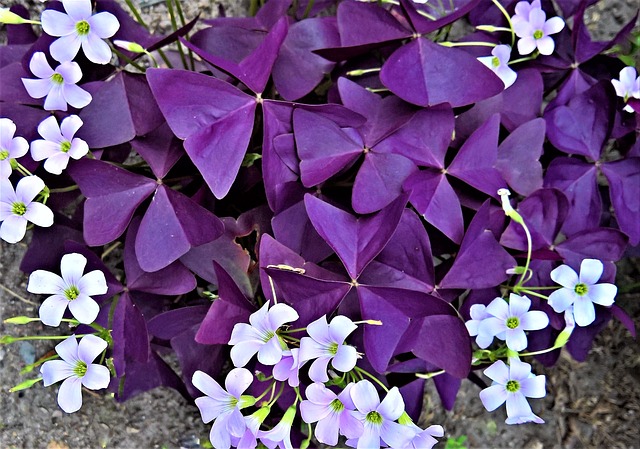
Commonly known for its charming clover-like leaves and delicate, star-shaped flowers, Oxalis is another exceptional choice for a shaded porch this fall. These playful plants offer a unique character that can add a whimsical touch to your decor, while also providing a burst of color in low-light spaces. The leaves often come in shades of green, burgundy, and even a refreshing silvery hue that can elegantly contrast with other plants.
Oxalis species, such as Oxalis triangularis, are particularly popular because of their distinct foliage that folds up at night and reopens in daylight, almost as if they are performing a daily ritual of awakening. They thrive in cool, moist environments — which makes the fall weather a particularly favorable time for them to flourish. To grow Oxalis successfully, choose a pot with adequate drainage to prevent rot, and water them moderately.
For a visually stunning display, consider planting Oxalis in decorative pots or mixed arrangements with other shade residents. Their low-maintenance nature paired with their charming personality makes them an ideal candidate for those looking to refresh their shaded porch without much fuss. Plus, the subtle movement of their leaves adds a lively energy to your outdoor space, creating an enchanting area to sit and enjoy the beauty of the season.
Cast Iron Plant
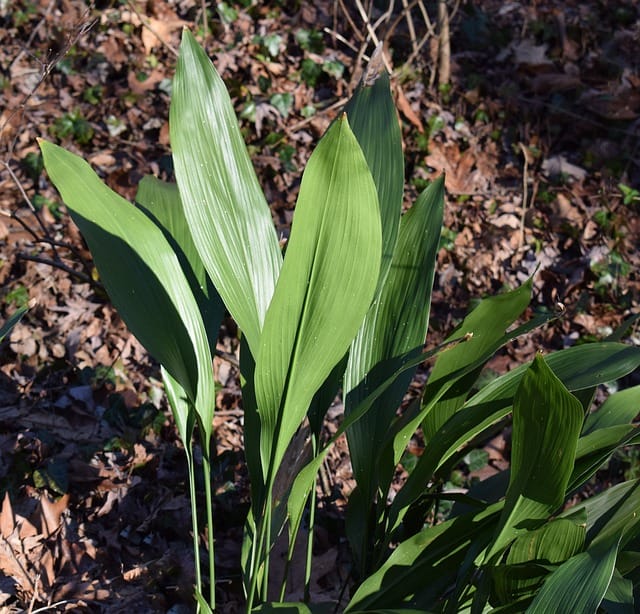
For those who appreciate the idea of a hardy plant that requires minimal care while still making a striking statement, the Cast Iron Plant (Aspidistra elatior) is the perfect option for a shaded porch. As its name suggests, this plant is nearly indestructible, thriving in low-light conditions and withstanding neglect better than many other houseplants and outdoor plants.
The Cast Iron Plant boasts long, glossy, dark green leaves, which lend a lush, tropical feel to your shaded area. It can adapt to various soil types, although it does prefer well-draining soil. This adaptability allows it to flourish even in less-than-ideal growing conditions, making it a favorite among both novice and seasoned gardeners. Additionally, the Cast Iron Plant is drought-tolerant and does not need frequent watering, allowing you to enjoy the beauty of your porch without the constant maintenance typically required by other plants.
To maximize the visual impact of the Cast Iron Plant, consider using it as a statement piece in a large decorative pot or as part of a mixed arrangement with other shade-loving plants. Its robust presence can complement the more delicate foliage of other plants, creating an intriguing contrast that draws the eye and adds depth to your shaded porch. With its resilience and striking appearance, the Cast Iron Plant ensures your outdoor space remains vibrant and inviting, even as the fall season transitions into winter.
Creeping Jenny
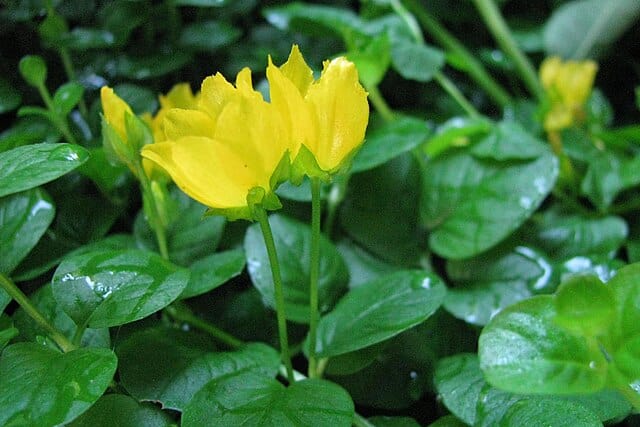
Creeping Jenny (Lysimachia nummularia) is a delightful perennial that offers a vibrant pop of color, making it an excellent choice for a shaded porch. This ground-cover plant is particularly prized for its bright chartreuse foliage, which creates a stunning visual contrast against the golden hues of fall. In cooler months, the leaves take on lovely shades of yellow and orange, accentuating the transitional beauty of the season.
Creeping Jenny thrives in partial to full shade and prefers consistently moist soil, which can be easily achieved with regular watering. It is especially useful for draping over the edges of pots or window boxes, allowing its cascades of color to soften hard surfaces and create an inviting look. This plant’s cheerful colors can pair beautifully with ornamental grasses or flowering plants, offering a textural diversity to your arrangements.
Another notable feature of Creeping Jenny is its rapid growth, making it an effective choice for filling in bare spots and creating lush greenery in shaded areas. For an added layer of visual interest, consider using it in combination with darker foliage plants, allowing the brightness of Creeping Jenny to truly shine and create a layered landscape of rich beauty.
Sweet Potato Vine
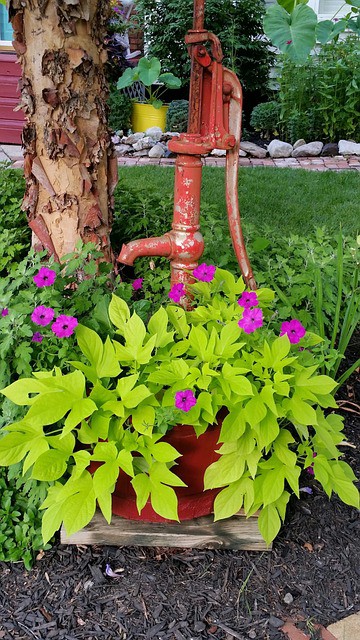
Sweet Potato Vine (Ipomoea batatas) is not just for the vegetable garden; this plant is a fantastic addition to shaded porches, known for its stunning foliage and versatility in arrangements. With its heart-shaped leaves that can come in various shades—ranging from deep purple to vibrant green—Sweet Potato Vine offers a striking visual appeal during the fall months.
One of the key advantages of Sweet Potato Vine is its ability to thrive in a range of light conditions, from full sun to shade. It prefers moist, well-draining soil and responds well to regular watering, which not only nourishes the plant but also stimulates the development of its attractive leaves. As the autumn progresses, the foliage will often take on richer colors, making it a wonderful backdrop for seasonal decor or other plants.
Sweet Potato Vine’s trailing habit makes it ideal for hanging baskets or cascading over the sides of pots. It can also be utilized as a stunning ground cover for shaded garden areas. For a compelling display, consider planting it alongside plants that feature contrasting textures, such as ferns or ornamental grasses, to emphasize its lushness. Whether draping beautifully over containers or filling in garden beds, Sweet Potato Vine adds a dynamic touch of color and charm to your fall landscape.
English Ivy
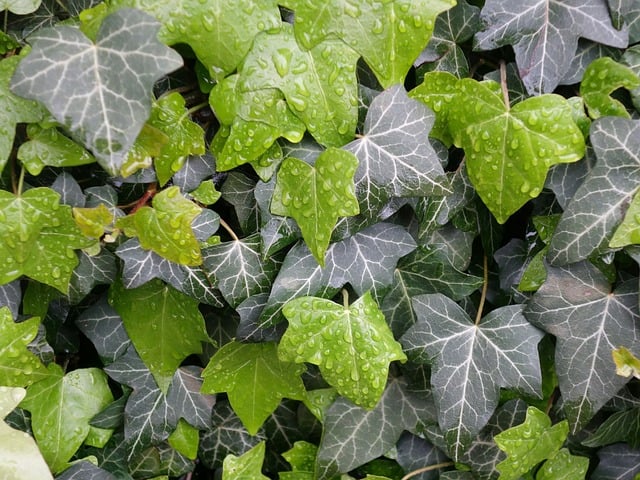
English Ivy (Hedera helix) is a timeless choice for shaded porches that adds classic elegance and versatility. With its lush, trailing vines and distinctive leaves that vary in color from deep green to variegated white or yellow, this plant thrives in low-light conditions and excels in providing a lush, softening effect to hard surfaces like walls or trellises.
This hardy perennial can adapt to a wide range of growing conditions, including poor soil, making it a resilient option for fall planting. Just ensure that the soil remains well-drained and water it regularly to keep the vines healthy. English Ivy is known for its climbing habit, so providing a support structure, such as a trellis or railing, can help it showcase its beautiful trailing growth.
One of the many benefits of English Ivy is its ability to purify indoor and outdoor air, enhancing the overall health of your space. As an evergreen, it maintains its foliage during the fall and winter months, offering year-round beauty in your shaded area. To create an attractive display, consider mixing English Ivy with other low-growing plants, allowing its trailing vines to cascade elegantly while complementing the surrounding foliage.
Wandering Jew
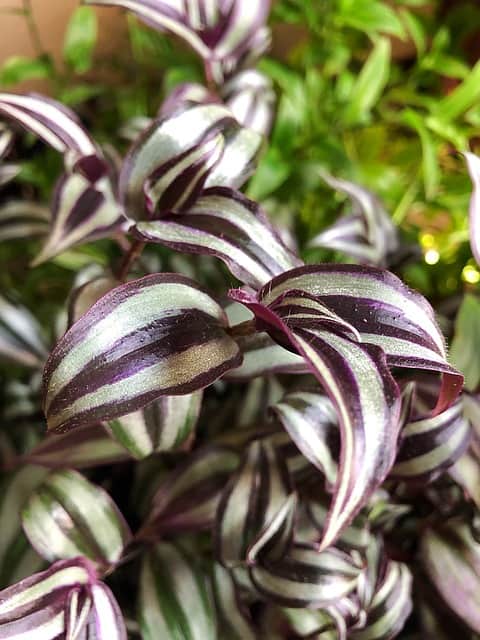
Wandering Jew (Tradescantia zebrina) is a captivating plant that brings a splash of color and eye-catching patterns to your shaded porch. Known for its striking foliage, this plant features vibrant stripes of purple, green, and silver on its leaves, creating a lively visual display that brightens even the shadiest of corners. The unique color combination adds depth and intrigue, making it an excellent option for fall arrangements.
Wandering Jew is ideally suited for partial shade and thrives in well-draining, moist soil; however, it’s adaptable and can handle a variety of conditions. Regular watering helps maintain the vibrancy of its leaves, especially as the weather cools down. One of the standout qualities of Wandering Jew is its trailing growth habit, which makes it perfect for hanging baskets or as a cascading accent in mixed pots. For a stunning display, combine it with other shade-loving plants that contrast with its colorful leaves, allowing each one to shine within the arrangement.
In addition to its ornamental appeal, Wandering Jew is relatively easy to propagate, allowing you to take cuttings and fill your porch or share them with friends. As it grows and weaves through your selections, it not only brings beauty to your shaded porch but also adds a touch of lively movement to your fall decor.
Silver Nickel Vine

Silver Nickel Vine (Callisia repens), also known as Chain Plant or Callisia, is a delightful choice for those seeking a plant with both charm and a sophisticated aesthetic. This plant is appreciated for its lush, trailing nature and distinctive foliage, characterized by striking silver-green leaves adorned with a shiny, reflective quality. Its unique appearance is particularly complementary to the softer hues of autumn, making it a perfect fit for a shaded porch.
This vine enjoys partial shade and thrives in well-draining soil, requiring moderate watering to keep its roots happy. Silver Nickel Vine is a fast-growing plant that can easily fill out a container, providing an abundance of cascading leaves that lend a fresh and verdant atmosphere to your porch. Its trailing vines can also be trained over trellises or allowed to spill over the edges of pots, creating an enchanting display.
For a dynamic combination, consider pairing Silver Nickel Vine with plants that offer contrasting textures or colors, such as dark foliage varieties or seasonal blooms. As this vine flourishes, it adds a soothing depth to your shaded porch, encouraging you to unwind in the tranquility of your autumn surroundings.
Hostas

Hostas are a perennial favorite for shaded gardens and porches, known for their lush foliage and impressive range of colors, shapes, and sizes. As the weather cools, Hostas thrive, making them a quintessential addition to your fall plant collection. With their broad, heart-shaped leaves ranging from varying tones of green to striking gold and blue, Hostas can create a layered and visually stunning display.
These shade-loving plants are particularly low-maintenance, preferring moist, well-draining soil. They are perfect for shaded areas where other plants might struggle, ensuring a lush, green landscape throughout the fall months. As summer fades, Hostas not only maintain their vibrant foliage but also produce elegant flower spikes that can add a soft touch when they emerge.
Hostas seamlessly complement a wide variety of plants, including ferns and spring-flowering bulbs, allowing for diverse planting schemes. Their versatility means you can create a visually engaging arrangement, employing varying sizes and leaf patterns to provide textural interest. Additionally, Hostas are known for their resilience, making them a steadfast anchor in any shaded porch design, promising beauty and splendor year after year.
Herbs
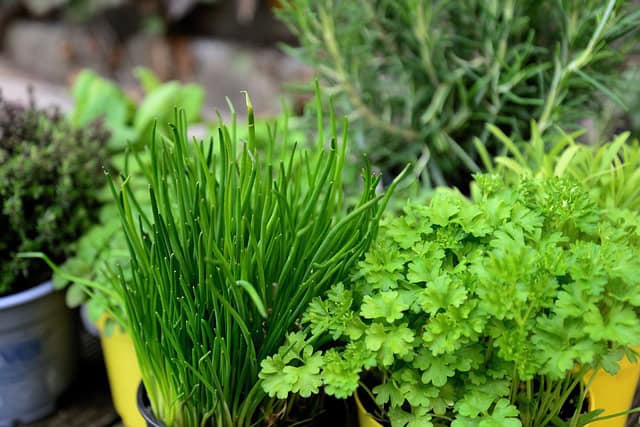
Herbs are an exceptional choice for shaded porches, where they can thrive without the harsh glare of direct sunlight. Many culinary herbs not only tolerate but actually prefer partial shade, making them well-suited for a cozy fall atmosphere. Here are a few standout options that can flourish in lower light while enhancing your culinary repertoire:
Mint
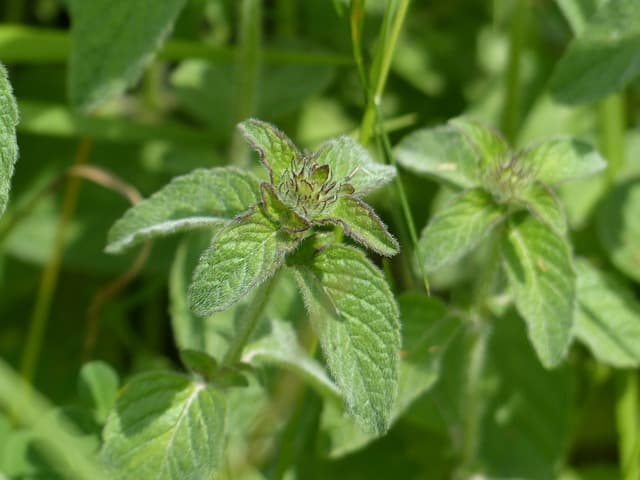
Mint is a vigorous grower that thrives with some protection from direct sunlight, making it an ideal candidate for a shaded porch. Its fresh, aromatic leaves are perfect for adding flavor to teas, salads, desserts, and cocktails, bringing a refreshing burst of flavor as the temperature drops. With varieties such as spearmint and peppermint, you can enjoy a range of tastes, each offering its unique aromatic profile.
When planting mint, it’s important to choose adequately drained soil that remains consistently moist but not waterlogged. Keep in mind that mint can be aggressive in its growth; consider planting it in a container to prevent it from overtaking other plants. As it establishes, the rapidly-growing foliage produces small white or purple flowers, which can add subtle beauty to your fall display. The delightful scent of mint, combined with its lush foliage, will create a vibrant and inviting atmosphere on your porch.
Parsley

Parsley is another resilient herb that can thrive in shaded conditions and is often used in fall recipes, from hearty soups to garnishes for festive dishes. This biennial herb can be grown in either flat-leaf (Italian) or curly varieties, both of which offer their own visual appeal and culinary uses. Parsley does best in rich, well-drained soil and enjoys consistent watering to keep its leaves lush and vibrant.
With its bright green leaves, parsley can add a refreshing contrast to the deeper tones of other fall plants. It’s not only a flavorful herb but also a nutritional powerhouse, packed with vitamins A, C, and K. To encourage continued growth into fall, regularly snip the leaves to promote bushier growth while preventing flowering, which can lead to a bitter taste. Integrating parsley into your shaded porch creates a practical herb garden that’s easily accessible for culinary use while softening your outdoor space.
Cilantro
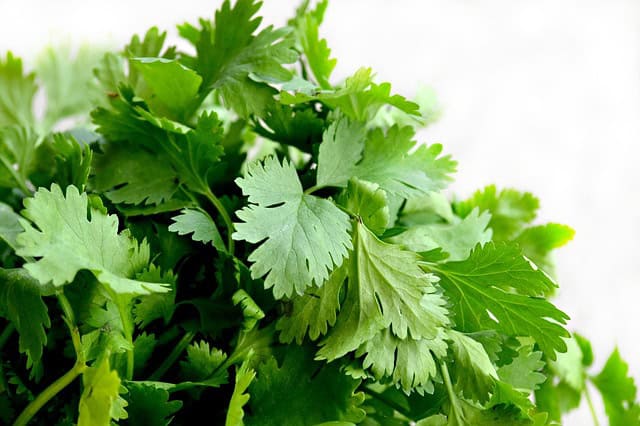
Cilantro (Coriandrum sativum) is a unique and flavorful herb that prefers cooler conditions, making it an especially good choice for fall gardening. While it can tolerate some shade, cilantro thrives best when temperatures are moderate, typical of autumn’s arrival. This herb is celebrated for its distinct flavor, widely used in cuisines ranging from Mexican to Asian dishes, and can be enjoyed fresh in salsas, salads, and herbaceous dressings.
Cilantro grows quickly and can produce both leaves and seeds (coriander), giving you multiple uses throughout the season. For optimal growth, sow cilantro seeds in well-draining soil and water it regularly to ensure consistent moisture. When regular harvesting occurs, the plant will continually produce fresh leaves, allowing you to enjoy its bright flavor in many dishes. Adding cilantro to your shaded porch not only brings culinary benefits but also enhances the aesthetic with its feathery green foliage.


